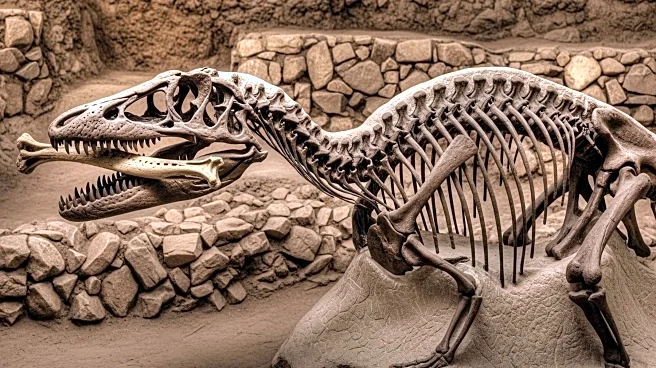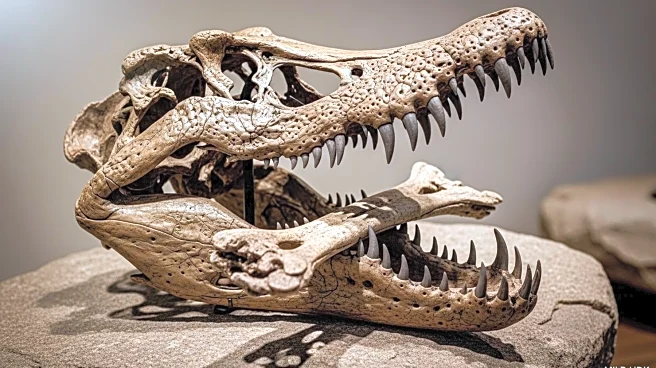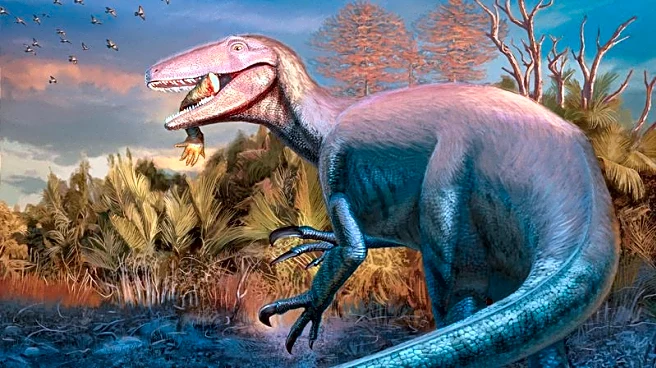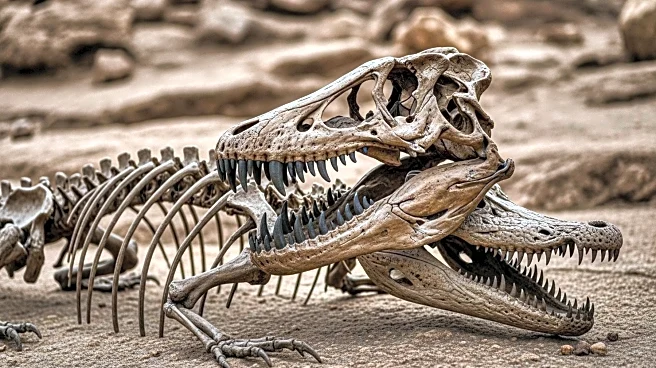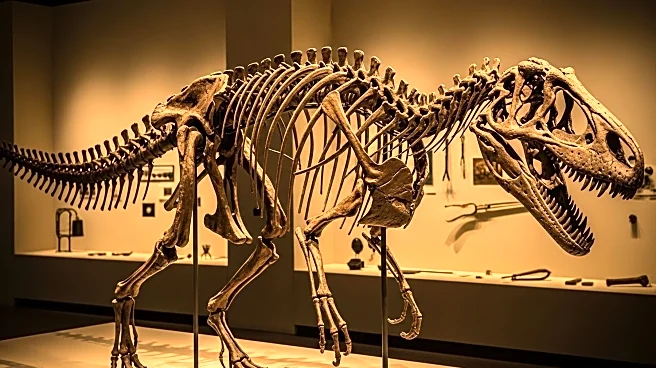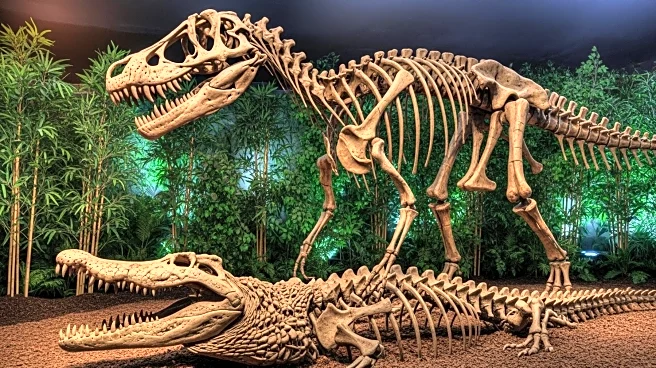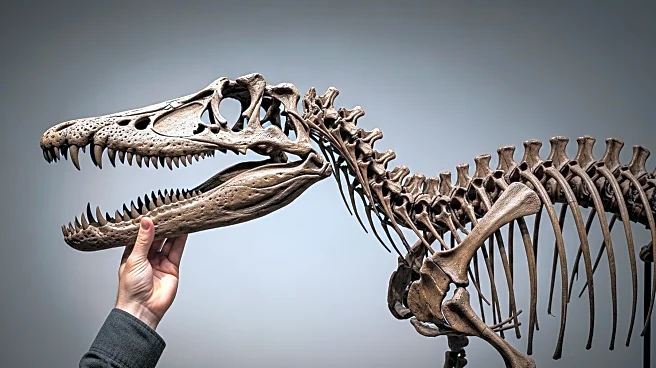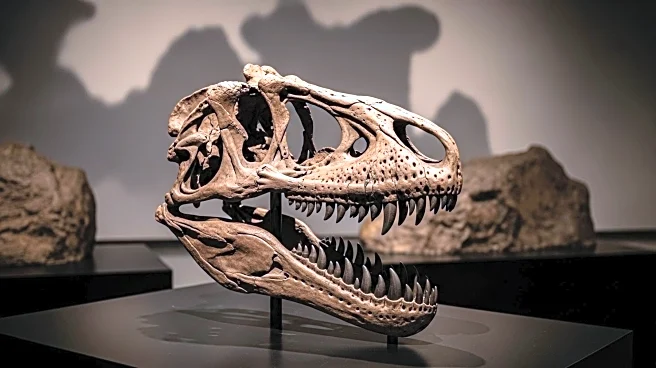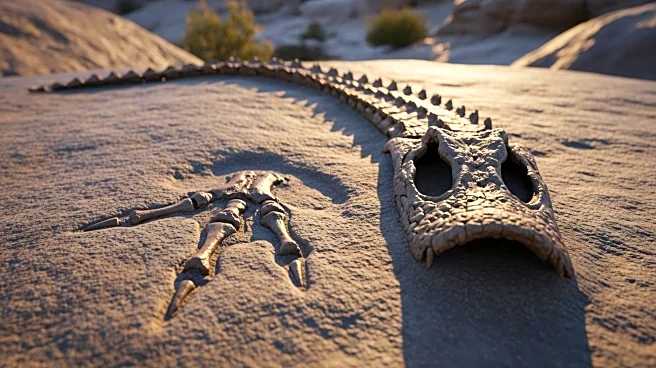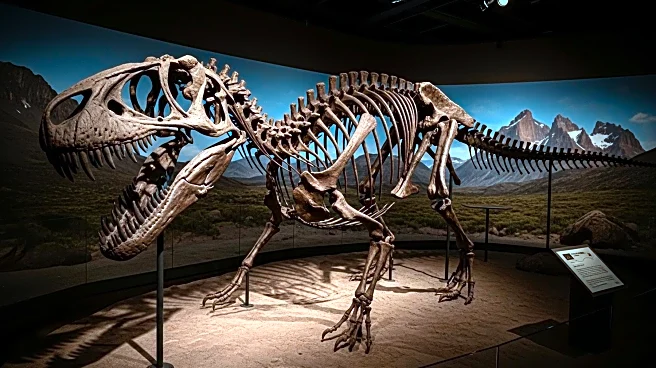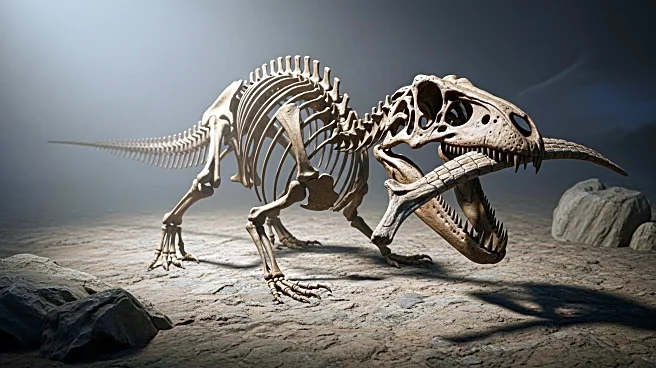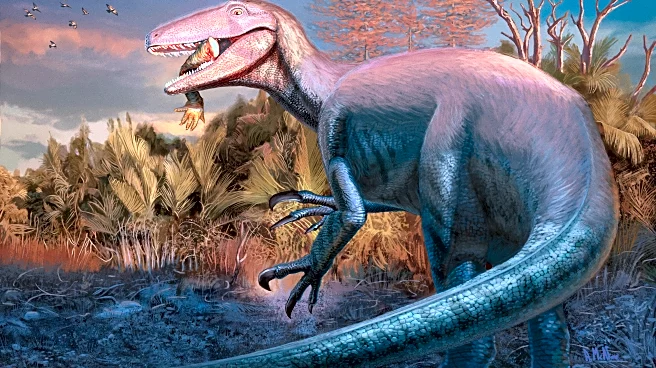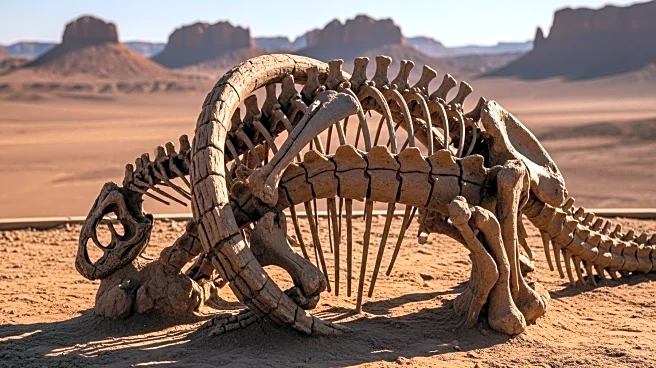What is the story about?
What's Happening?
Paleontologists in Argentina have discovered a new predatory dinosaur species, Joaquinraptor casali, which was found with a crocodile bone in its mouth. This discovery provides insights into the feeding behaviors of megaraptorans, suggesting Joaquinraptor may have been an apex predator in its region. The fossils, found in the Lago Colhué Huapi Formation in Patagonia, are well-preserved and include much of the skull, limbs, ribs, and vertebrae. The dinosaur likely lived between 66 million and 70 million years ago during the Cretaceous period, making it one of the most recently surviving species of megaraptorans.
Why It's Important?
The discovery of Joaquinraptor casali is significant as it offers new insights into the ecological role and behavior of megaraptorans, a group of carnivorous dinosaurs that went extinct at the end of the Cretaceous period. Understanding the diet and predatory habits of Joaquinraptor can help scientists better comprehend the dynamics of prehistoric ecosystems and the evolutionary adaptations of large predators. This finding also contributes to the broader knowledge of dinosaur biodiversity and the factors that led to their extinction.
What's Next?
Further research is needed to gain more insights into Joaquinraptor's ecological role and behavior. Scientists may continue to study the fossils to understand the growth patterns and life cycles of megaraptorans. Additionally, the discovery may prompt further exploration in the Lago Colhué Huapi Formation to uncover more fossils that could provide additional information about the region's prehistoric environment.
Beyond the Headlines
The discovery highlights the importance of paleontological research in understanding ancient ecosystems and the evolutionary history of life on Earth. It also underscores the potential for new findings to challenge existing theories and expand scientific knowledge. The presence of a crocodile bone in Joaquinraptor's mouth offers a unique glimpse into predator-prey relationships during the Cretaceous period.
AI Generated Content
Do you find this article useful?
